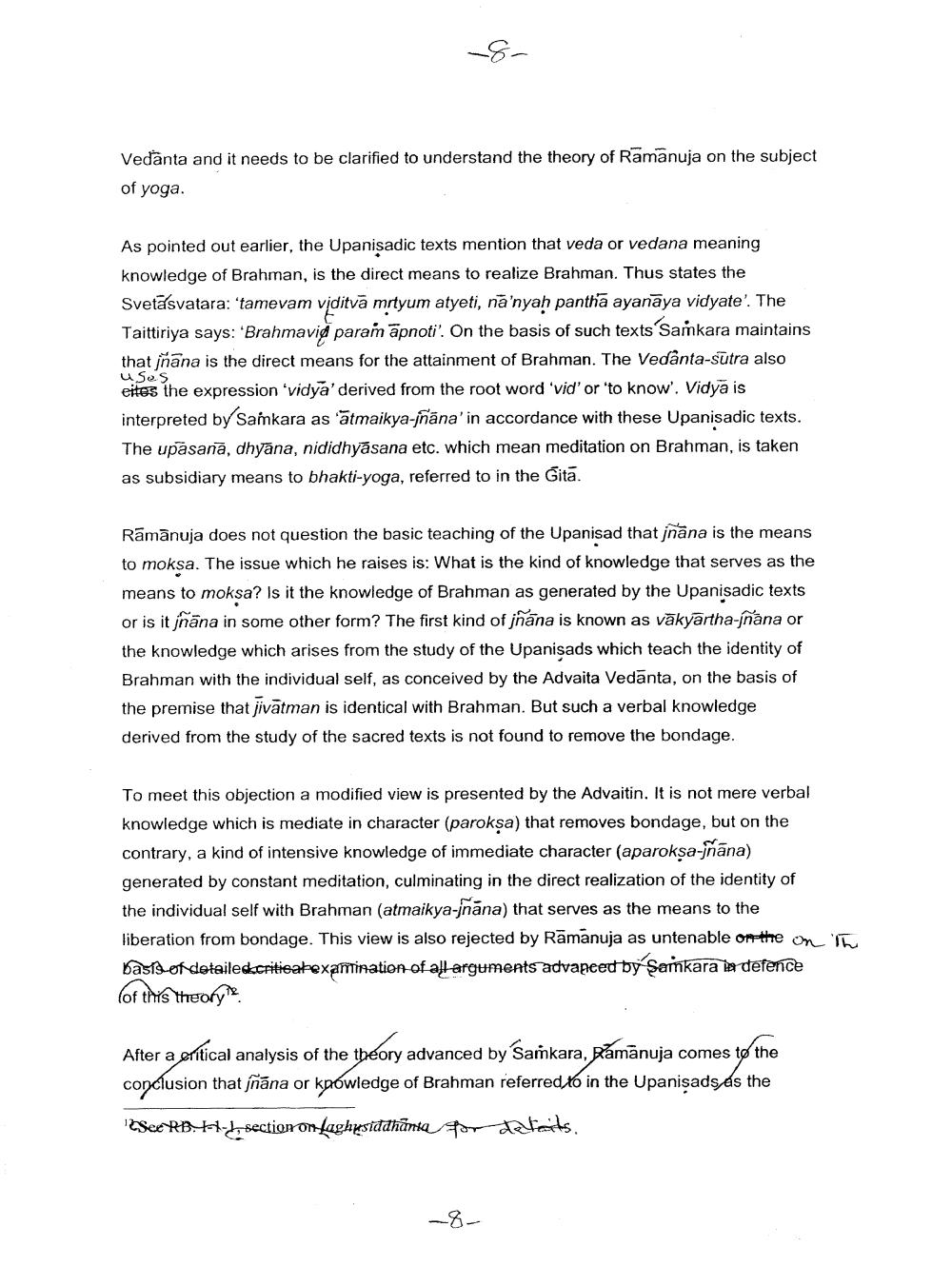Book Title: Synthesis of Yoga in Vaisnavism of Ramanuja Author(s): Publisher: View full book textPage 8
________________ 8 Vedanta and it needs to be clarified to understand the theory of Ramanuja on the subject of yoga. As pointed out earlier, the Upanisadic texts mention that veda or vedana meaning knowledge of Brahman, is the direct means to realize Brahman. Thus states the Svetalsvatara: 'tamevam vjditva mrtyum atyeti, na'nyah pantha ayanaya vidyate? The Taittiriya says: 'Brahmavia paramapnoti'. On the basis of such texts Sarkara maintains that jnana is the direct means for the attainment of Brahman. The Vedanta-sutra also eites the expression 'vidya' derived from the root word 'vid' or 'to know'. Vidya is interpreted by Samkara as atmaikya-snana' in accordance with these Upanisadic texts. The upasana, dhyana, nididhyasana etc. which mean meditation on Brahman, is taken as subsidiary means to bhakti-yoga, referred to in the Gita. Ramanuja does not question the basic teaching of the Upanisad that jnana is the means to moksa. The issue which he raises is: What is the kind of knowledge that serves as the means to moksa? Is it the knowledge of Brahman as generated by the Upanisadic texts or is it jnana in some other form? The first kind of jnana is known as vakyartha-jnana or the knowledge which arises from the study of the Upanisads which teach the identity of Brahman with the individual self, as conceived by the Advaita Vedanta, on the basis of the premise that jivatman is identical with Brahman. But such a verbal knowledge derived from the study of the sacred texts is not found to remove the bondage To meet this objection a modified view is presented by the Advaitin. It is not mere verbal knowledge which is mediate in character (paroksa) that removes bondage, but on the contrary, a kind of intensive knowledge of immediate character (aparoksa-inana) generated by constant meditation, culminating in the direct realization of the identity of the individual self with Brahman (atmaikya-jnana) that serves as the means to the liberation from bondage. This view is also rejected by Ramanuja as untenable on the in bast of detailedkfritisakexamination of all-arguments advanced by Saikara be defence of this theory the After a gritical analysis of the theory advanced by Samkara, Ramanuja comes to the conclusion that jnana or knowledge of Brahman referred to in the Upanisads as the Sec RB. Hol, section on faghusiddhantar tetats.Page Navigation
1 ... 6 7 8 9 10 11 12 13 14 15 16 17 18 19 20 21 22 23
